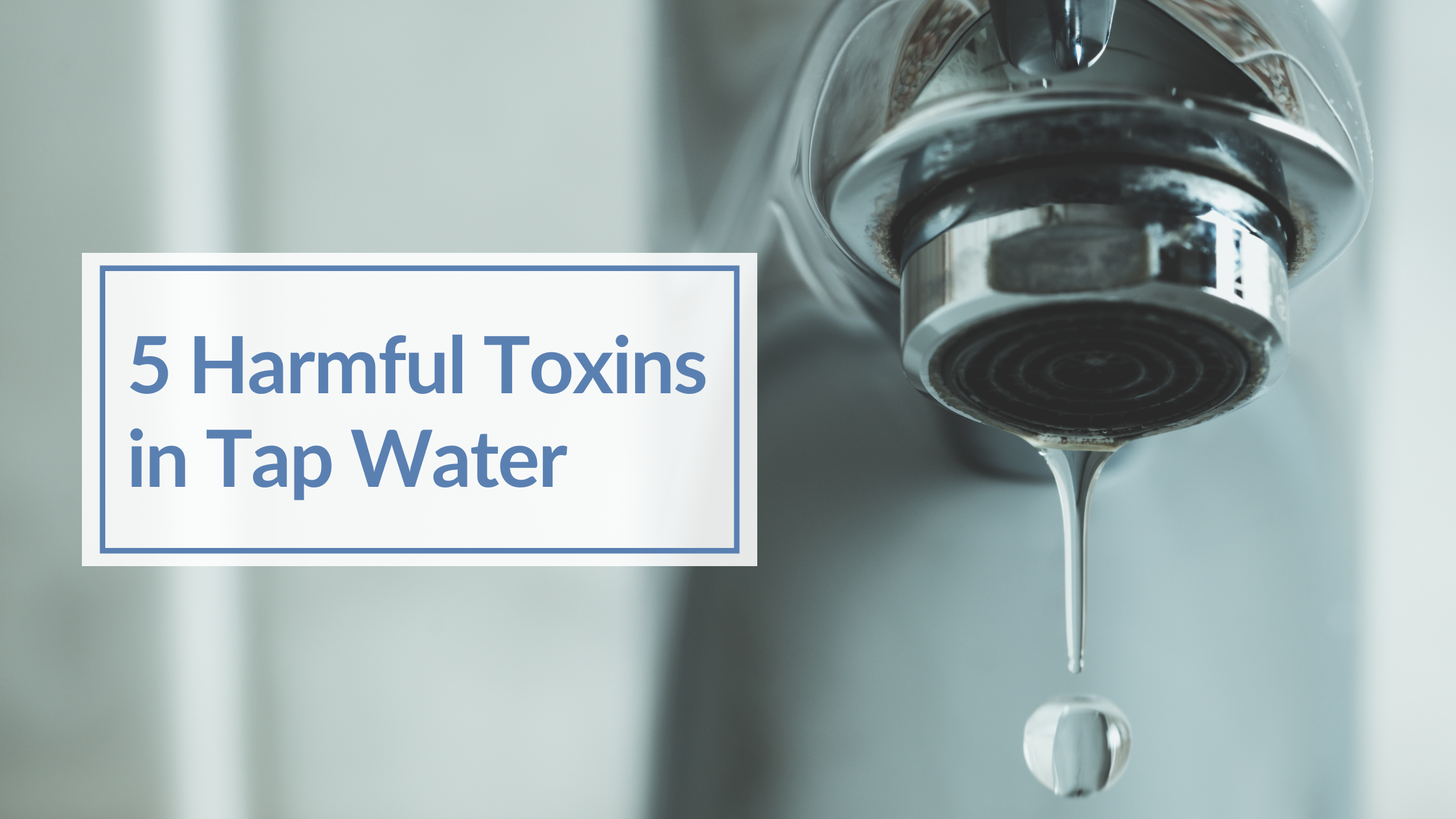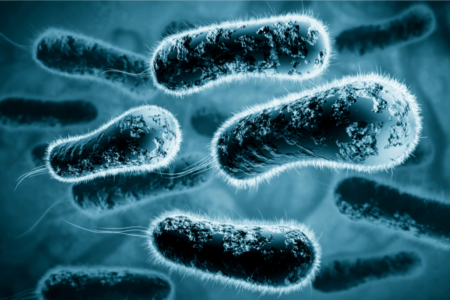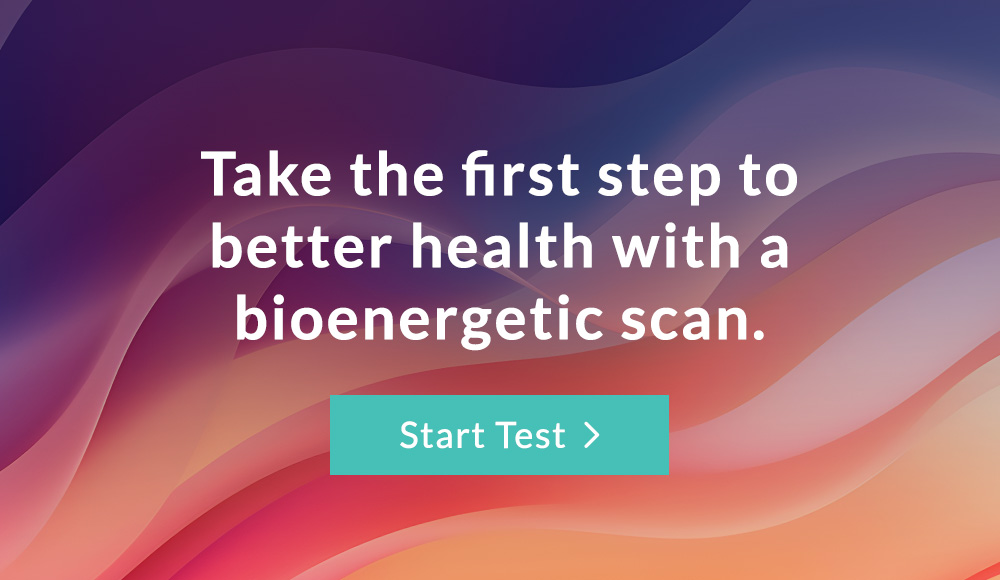
What You Need to Know about the Toxins in Tap Water
Have you ever considered the toxins in tap water that might be lurking in a seemingly refreshing glass poured straight from your faucet? That crystal clear, pure-looking water should invite you to take a sip without a second thought! Many of us trust that our tap water is clean and safe, but sometimes toxins slip into our water no matter how hard public health tries to make it safe and consumable.
Pollution is a part of our daily lives, seeping into the air we breathe and the soil that grows our food. And, as we’ll discuss in this blog, our water supply is not exempt. Various forms of environmental toxins, including toxins in tap water, pose risks to nature and our health.
Before we give you some great tips on cleaning up your drinking water, let’s cover the regulations that cover water plant guidelines!

Water Regulations
Public water systems are supposed to meet specific quality standards, but adherence can vary by location. The Environmental Protection Agency (EPA) sets legal limits on contaminants that are “allowed” in drinking water.
The contaminants fall into 3 broad categories:
- Chemicals
- Contaminants
- A category called “right to know”.
Consider Flint, Michigan, where dangerously high lead levels tainted the water supply in 2014.
The Flint water crisis, arising from a cost-saving decision to switch the city’s water supply source, led to catastrophic consequences. Many residents experienced physical health issues like skin rashes, hair loss, and itchy skin, alongside mental health challenges such as anxiety and depression. Some endured lasting trauma as a result of prolonged lead exposure.
Thankfully, this isn’t an everyday occurrence! We’re all grateful we have regulations in place to keep us safe. However, we have to stay informed to stay abreast of the places where environmental toxins sneak into our homes and bodies. Providing this information is part of our mission at CBH Energetics to empower you to understand your own body and the outside forces that can stress it.
Here’s what we mean: knowing that your Liver is where toxins in tap water will be broken down means that you can support this process.
Scan Tip: Our process can reveal energetic nutrient imbalances that relate to liver detoxification! Nutrients like Vitamin C, Folic Acid, Vitamin E and many B Vitamins support the liver in it’s phase of removing pollutants from the body! Did they show up imbalanced on your Full Scan report? If so, you now have great information and suggestions to add to your regular diet!
Let’s Look at 5 Harmful Toxins in Tap Water
Should your bioenergetic scan reveal the presence of any of the following energetic toxins in your report, it does not constitute a diagnosis or a health issue. Instead, it indicates an energetic exposure and currently holds a negative resonating pattern.
1. Microorganisms
Microorganisms, including bacteria, viruses, and protozoans like E. coli or Giardia, are invisible to the naked eye. While most are harmless, a few “infectious” ones can cause illness or disease if they multiply in our bodies.

These microorganisms are part of our environment and only occasionally make healthy people sick. Although contaminated drinking water is one potential source of these microorganisms, outbreaks of waterborne illnesses are rare due to modern disinfection methods like chlorination.
However, history reminds us to stay vigilant. In May 2000, Walkerton, Ontario, experienced one of Canada’s largest waterborne illness outbreaks. Heavy rain and inadequate water treatment led to contamination from fecal bacteria, resulting in seven deaths and numerous illnesses.
Similarly, in April 1993, Milwaukee, Wisconsin, experienced an outbreak of cryptosporidiosis, a gastrointestinal illness caused by the parasite Cryptosporidium. Over 400,000 residents fell ill, and several deaths occurred due to contaminated drinking water.
Despite advancements, many developing nations still need help with issues in their drinking water supply, where microorganisms and toxins in tap water remain prevalent.
If any of these resonating toxins show up on your scan, you may see stress in the Digestive System, Liver/Gallbladder, Blood System, and Nervous System.
2. Heavy Metals
Heavy metals, including arsenic (As), cadmium (Cd), chromium (Cr), lead (Pb), and copper (Cu), can infiltrate water sources via natural geological processes or human activities such as mining, industrial discharge, and waste disposal. These contaminants pose significant health risks to populations globally.
Heavy metal contamination in water is a pervasive issue. Millions of people worldwide are exposed to elevated levels of heavy metals in their drinking water. For example, arsenic contamination affects over 200 million people globally.
The health effects of heavy metals are well-documented.
Lead exposure, even at low levels, can impair cognitive development in children, increase blood pressure in adults, and cause a range of neurological and cardiovascular problems. 20% of our lead exposure comes from water.
Mercury exposure is linked to neurological disorders, developmental delays, and cardiovascular diseases. If mercury is one of your energetic environmental toxins, look to see if there is Nervous System or Cardiovascular System Stress. You can also look to your optional balanced regimen: if Wild Bear Garlic or Cilantro Intrinsic is matched to you, this may mean that mercury or other metals are carrying a bigger energetic impact.
Arsenic exposure is associated with skin lesions and cardiovascular diseases, among other health problems.
Excessive copper exposure has been associated with gastrointestinal issues, such as nausea and vomiting, as well as liver and kidney damage.
3. Fluoride
Fluoride will spark some debate. It’s a mineral that’s actually added to municipal water to help prevent tooth decay and promote dental health. While fluoride is touted for its effectiveness in reducing cavities, there are equal concerns about its potential for adverse effects.
Dental Fluorosis: Prolonged exposure to high fluoride levels, especially during pregnancy and childhood, can cause dental fluorosis, which leads to tooth discoloration and mottling. Severe cases may result in enamel damage and increased tooth sensitivity.
Skeletal Fluorosis: Chronic ingestion of excessive fluoride can lead to skeletal fluorosis. This condition causes bone and joint pain, stiffness, and deformities, impacting mobility and health.
Neurological Effects: Some studies suggest a potential link between fluoride exposure and adverse neurological effects, such as cognitive impairment and developmental disorders. Fluoride can also build up in the pineal gland, a small gland in the brain that regulates sleep-wake cycles and other hormonal functions. Over time, this accumulation can cause the pineal gland to calcify, which may interfere with its ability to produce melatonin, the hormone responsible for regulating sleep patterns. This calcification can disrupt both sleep and other hormonal functions.
Scan tip: The Pituitary and Pineal Gland can resonate as points of stress that drive the Endocrine System down. Fluoride will fall under the resonating toxin category of Chemicals. Fluoride can influence the Locomotor System, and Teeth and Jaw Drainage on a scan.
Ethical Concerns: Opponents of water fluoridation raise ethical objections, arguing against mass medication via the water supply.
4. Pharmaceuticals and Personal Care Products

Do you toss your unwanted medications in the toilet? Ever wonder where your shampoo or perfume ends up?
They could end up becoming toxins in your tap water. Sewage treatment plants are not currently designed to remove them from our water.
Chemicals from personal care products like shampoos, soaps, perfumes, pharmaceuticals, and other drugs represent another category of contaminants that can enter water sources through wastewater effluent and runoff. While their long-term effects on human health are still being studied, they can cause hormonal interference and other health problems.
Personal care products, including ingredients from medications and skin care products, have been found to interfere with the body’s Endocrine System.
These substances, often called endocrine disruptors, can mimic or interfere with hormones in the body, leading to:
- irregular periods
- mood swings
- changes in libido
- infertility
- developmental abnormalities, impaired growth
- neurological changes
5. Pesticides and Herbicides
The pesticides and herbicides used to control pests and weeds can enter water sources through runoff from treated fields, leaching from soil into groundwater, and runoff from urban areas where they are used for weed control.
Their presence in tap water is a significant concern due to their potential health risks. Exposure to these chemicals has been linked to a range of adverse health effects in humans, including:
- Reproductive and developmental effects: Prenatal exposure to pesticides and herbicides has been associated with adverse reproductive and developmental outcomes, including congenital disabilities, low birth weight, and developmental delays.
- Neurological effects: Some pesticides and herbicides have neurotoxic properties, meaning they can damage the nervous system and impair neurological function. Chronic exposure has been linked to cognitive deficits, memory impairment, and neurobehavioral disorders in both children and adults.
Additional Toxins in Tap Water
Dangerous levels of these toxins can cause some of the following issues:
Radon: A radioactive gas that can enter homes through tap water, radon exposure is linked to lung cancer.
Uranium: Naturally occurring in rocks and soil, uranium can leach into groundwater, leading to kidney damage.
Radium: Another naturally occurring radioactive element, radium, can contaminate groundwater, and prolonged exposure increases the risk of bone issues.
Nitrates and Nitrites: Common in fertilizers, these chemicals can leach into water supplies, posing risks especially to infants and pregnant women. They can cause methemoglobinemia, or “blue baby syndrome,” which reduces the blood’s ability to carry oxygen.
Benzene: Used in industrial solvents and gasoline, benzene can contaminate water through industrial discharge and spills. Long-term exposure is associated with an increased risk of leukemia and other cancers.
Asbestos: Once widely used in water pipes, asbestos fibers can still be found in older infrastructure, potentially increasing the risk of gastrointestinal issues.
Chloramines: Used as an alternative to chlorine for water disinfection, chloramines can cause respiratory problems and skin irritation. They can also form harmful disinfection byproducts (DBPs).
PFAS: Per- and polyfluoroalkyl substances (PFAS), known as “forever chemicals,” are synthetic compounds in many products like cookware and waterproof clothing. They’ve drawn attention for their persistence and potential health risks, including reproductive issues. Regulating and addressing PFAS contamination is a global challenge due to their widespread use and persistence in the environment.
Scan tip: hundreds of toxins are tested via bioresonance scanning through our Full or Balancing Scans. Not sure where an energetic exposure may come from? Perhaps it’s your drinking water.
Tips and Takeaways to Reduce Toxins in Tap Water!
There are 2 main things you can do: Target the water supply in your home and target your diet!
Uplevel your water supply:
- Install a Water Filter: Choose filters certified to remove specific contaminants like heavy metals, microorganisms, and chemical pollutants. Activated charcoal is an effective option for absorbing impurities, certain chemicals, and heavy metals from water.
- Use glass: Opt for glass containers to mitigate any additional chemicals found in plastic bottles or cups.
- Use a Water Testing Kit: Regularly test your tap water to identify and address any potential contaminants.
- Stay Informed: Follow local water quality reports to stay informed about potential issues in your area.
- Flush Your Taps: Let the water run for a few minutes before drinking or cooking, especially if the tap hasn’t run for several hours.
- Maintain Plumbing: Regularly inspect and maintain your plumbing to prevent the leaching of contaminants from old pipes.
- Shower Filters: Install shower filters to reduce exposure to chlorine and chloramines, which can irritate the skin (Integumentary System) and Respiratory System when inhaled as steam during showers.
Tweak your regular diet:
Increasing foods that help your liver and avoiding foods that may increase your heavy metal exposure can help. Try to add more:
Citrus: great for that Vitamin C!
Parsley and cilantro: in food or tincture form, both support liver detox.
Cruciferous vegetables: broccoli, brussels sprouts, cabbage, and cauliflower contain sulfur compounds that help the liver as well.
Implementing these simple yet effective measures in your home will help safeguard your health and the environment. We don’t want you to be afraid of your water. We do want to educate and empower you to understand and circumvent the everyday toxins we are all exposed to!
DISCLAIMER: Balanced Health, LLC/CBH Energetics and any parent, subsidiary, affiliated or related entities and companies do not provide medical advice or services. This post and the bioenergetic products and services offered by Balanced Health, LLC/CBH Energetics including, but not limited to, bioenergetic tests, bioenergetic scans, bioenergetic reports and related products and services (collectively the “Bioenergetic Products and Services”) are designed for educational and informational purposes only and are not intended to diagnose, treat, cure, or prevent any disease, condition, complaint, illness or medical condition and are not a substitute for professional services or medical advice. Testing is not used for the purpose of obtaining information for the diagnosis, prevention, or treatment of disease or the assessment of a health condition or for identification purposes.

